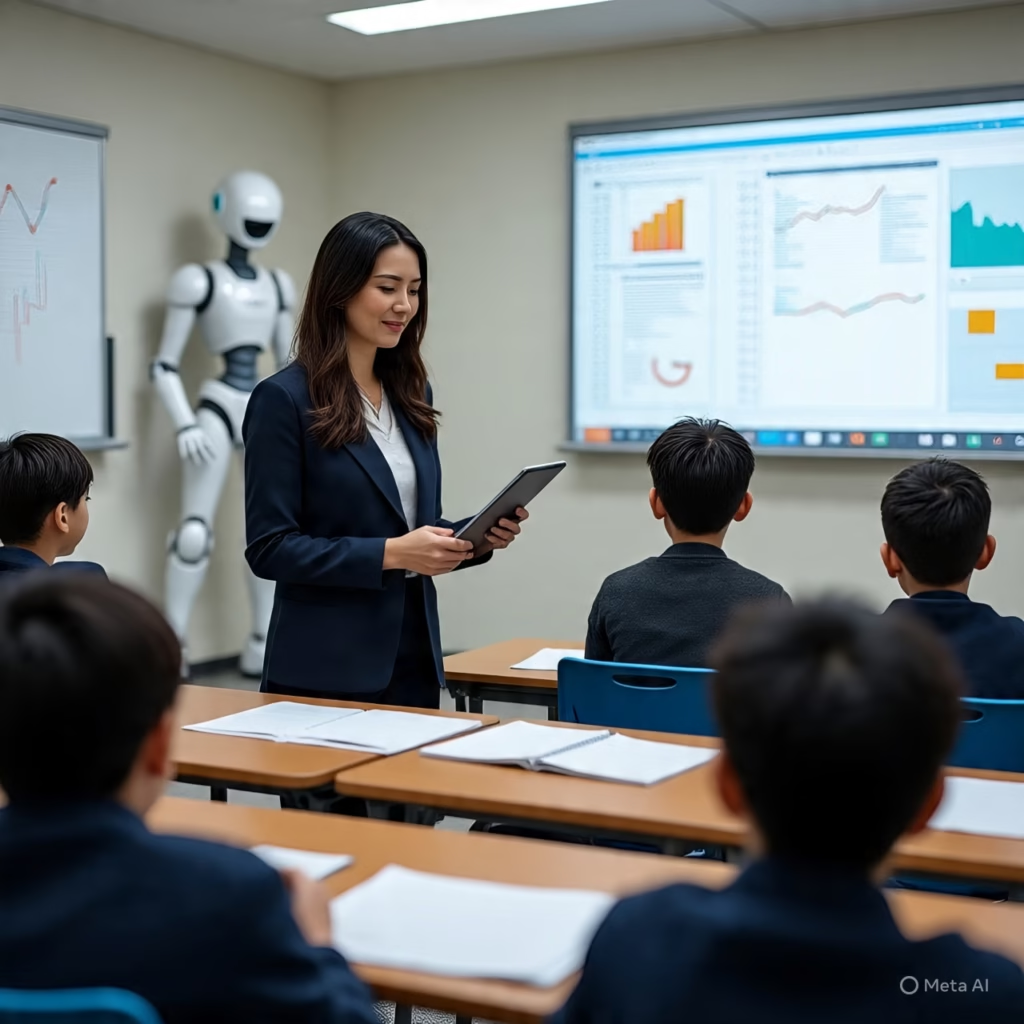Introduction.
How Teaching Is Being Subtly (But Substantially) Improved by Intelligence
I didn’t expect to be impressed by artificial intelligence in the classroom. Honestly, I assumed it would be another tech trend — all flash, little depth. But then I watched a ninth-grade student in a public school get real-time help solving a math problem he’d been stuck on for weeks. No hand raised. No tutor. Just his learning app adjusting itself and giving him the exact explanation he needed.
It wasn’t flashy. It wasn’t futuristic. It was just… helpful.
And that’s where the real story of AI in education starts — not with robots teaching kids, but with small, subtle changes that are quietly transforming how we learn.
Not All Students Learn the Same Way — AI Finally Gets That
If you’ve ever sat through a class bored out of your mind — or completely lost while everyone else moved ahead — you know the frustration of “one-size-fits-all” education. We’ve talked for decades about the need for personalized learning, but until recently, it was mostly just talk.
Now? It’s actually happening.
AI-powered platforms don’t just spit out content. They observe how a student responds to material, notice patterns, and shift gears when necessary. If a student keeps missing a certain kind of question, the system notices. It suggests a new approach. Slows things down. Gives more practice. Or maybe moves the student ahead if they’re clearly ready for the next challenge.
It’s not perfect — but it’s a start. And for students who’ve spent years trying to fit themselves into a rigid system, that shift feels long overdue.
Teachers Aren’t Being Replaced. They’re Being Supported.
There’s this weird fear that AI will take teachers’ jobs. I’ve seen it pop up in conversations again and again. But from what I’ve observed — and heard from actual educators — that fear misses the point.
Teachers don’t need to be replaced. They need to be backed up.
AI is great at doing the things that take up a lot of time and mental energy: grading quizzes, tracking who’s falling behind, organizing review materials. Let the system handle that. Teachers can connect with kids, support them, push them, and meet people where they are in the meantime—something that only people are capable of doing.
Like a pilot with a co-pilot, instructors with superior technology is more focused, self-assured, and able to focus on the important times.
The Tools Are Becoming More Inclusive — If We Let Them Be
I’ve seen firsthand how AI tools help students with learning challenges. One student I worked with has dyslexia. Using an AI reading assistant, she could hear text read aloud while following along visually — and even get simplified definitions when she hovered over tricky words.
Another student, an English language learner, used a language support feature that offered translations and pronunciation guides built right into his lessons.
These kinds of adjustments used to be difficult, if not impossible, to provide consistently. Now, they’re becoming built-in features. But — and this is a big but — only if schools have access to them. And that’s a problem.
If we want these tools to level the playing field, we have to make sure everyone has access — not just students in well-funded districts with fast Wi-Fi.
It’s Not All Sunshine — There Are Risks We Can’t Ignore
Let me be clear: I’m not blindly optimistic about AI in education. There are real concerns.
First off, privacy. These systems collect data — a lot of it. Learning habits. Test scores. Time spent on assignments. Who owns that data? How is it getting used? Serious moral problems could arise if we don’t take protecting pupil confidentiality seriously.
Then there’s bias. AI models are trained on existing data — and that data isn’t always fair or balanced. If we’re not careful, these systems could reinforce the same old inequalities, just dressed up in new technology.
And finally, overreliance.Pupils still have to solve challenging problems, interact with real people, make mistakes, and exercise critical thought. AI can support learning — but it should never replace the struggle. That’s where the real growth happens.
So What Should We Do With This New Power?
Like any tool, AI is only as good as how we use it.
If we treat it like a magic fix, we’re setting ourselves up for disappointment — or worse, harm. But if we use it thoughtfully — as a way to give every student more support, more flexibility, and more voice in their own learning — then it becomes something truly valuable.
Let’s not forget: education is, and always should be, about people. AI can improve our ability to teach, learn, and reach more students, but only if we continue to consider the human element. After all, an algorithm cannot take the place of a instructor with trusted you.

Might you like to read this blog.
<a href="http://<!– wp:separator –> <hr class="wp-block-separator has-alpha-channel-opacity"/> <hr class=”wp-block-separator has-alpha-channel-opacity”/> <!– /wp:separator –>
Leave a Reply